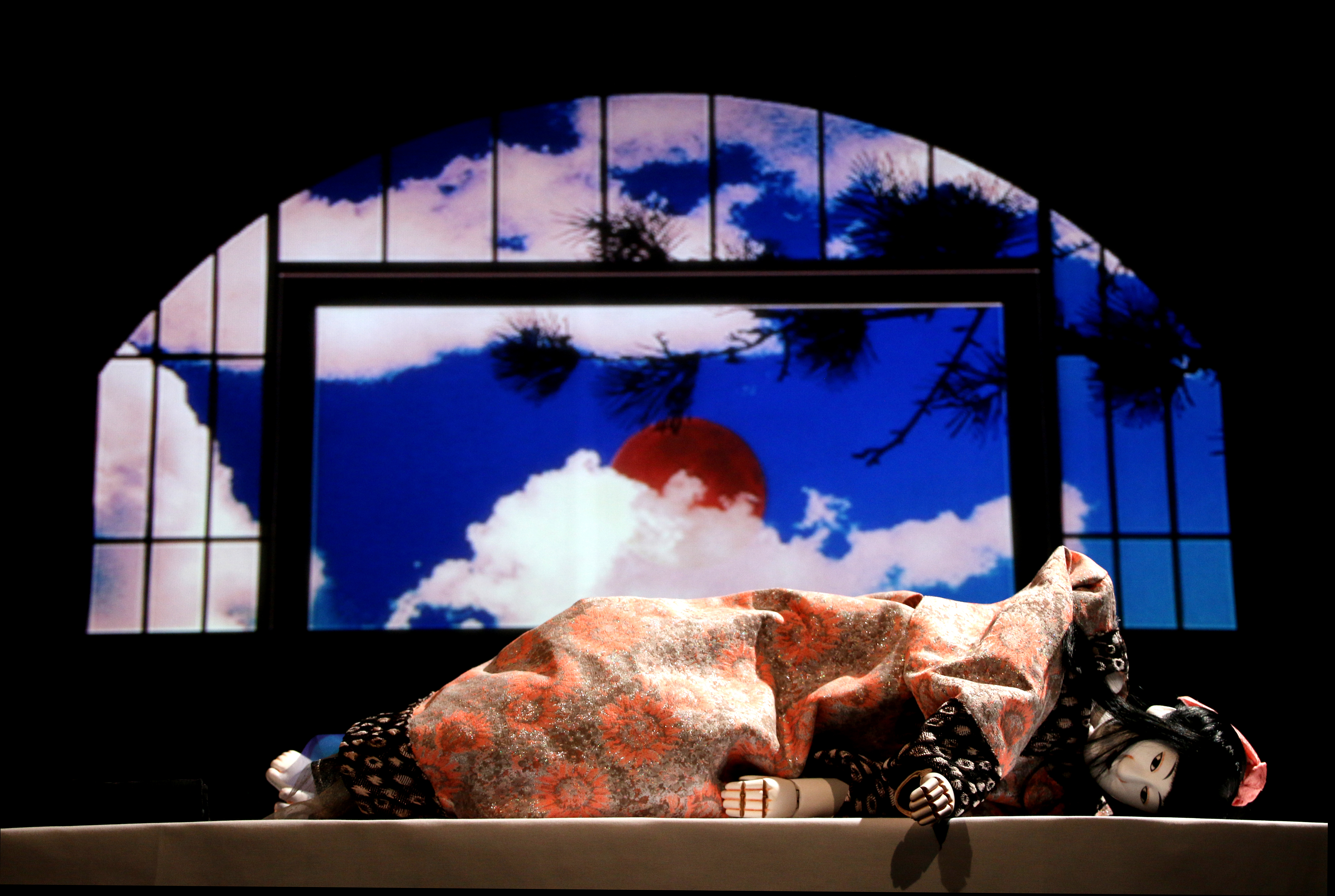Modern technology and age-old tradition combined last week for the premiere run of an ambitious Japanese opera with a difference — one with no live singers, musicians or actors.
That's because the stars of "Vocaloid Opera Aoi with Bunraku Puppets" at Hyper Japan in city-center Earls Court — an event "celebrating the most dynamic elements of Japanese popular culture" — could have stepped straight from the world of bunraku (traditional Japanese puppetry). And with even this performance-art film's libretto voiced by a computer, there's never been anything quite like those July 25-27 screenings.
Bunraku, whose roots trace back to late-17th-century Osaka, comprises three elements: ningyōtsukai (rarely-glimpsed black-clad puppeteers, three to a puppet, who are this work's only direct human contributors); tayū (chanter/voice actor); and a shamisen player sometimes augmented by taiko drummers. The role of the tayū is crucial in providing emotion to the story, expressing each character's voice, personality and even facial expressions, and though a sole tayū is the norm, in very long works others sometimes also take part.



